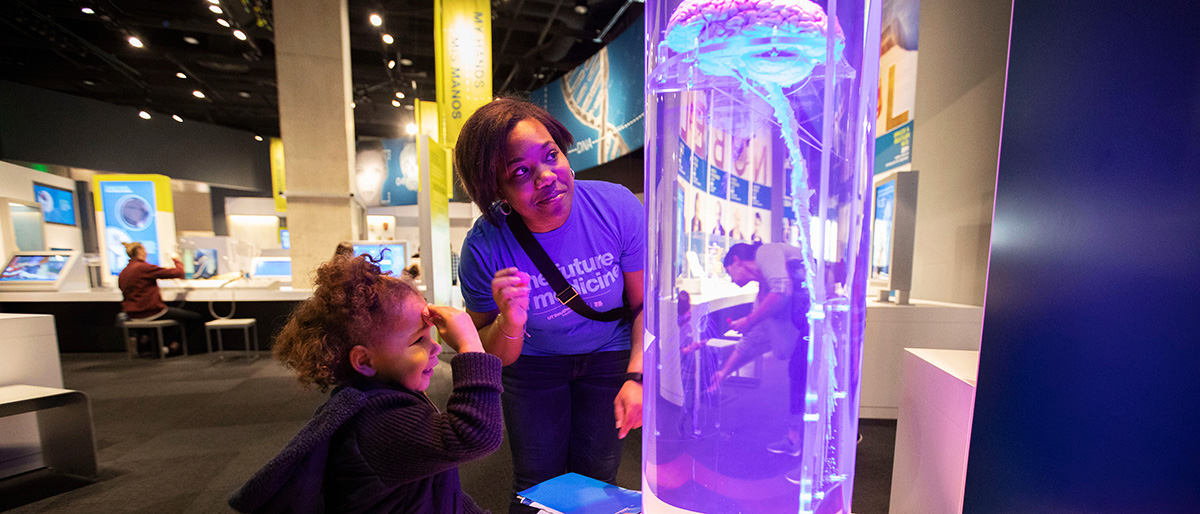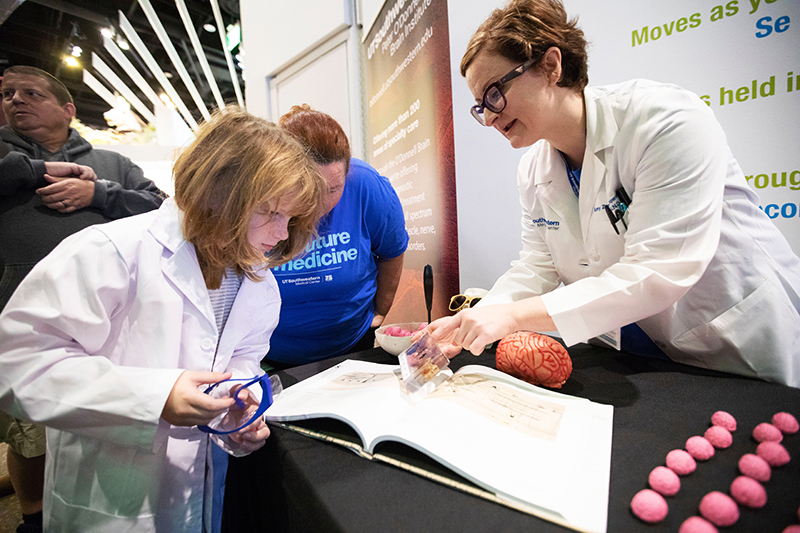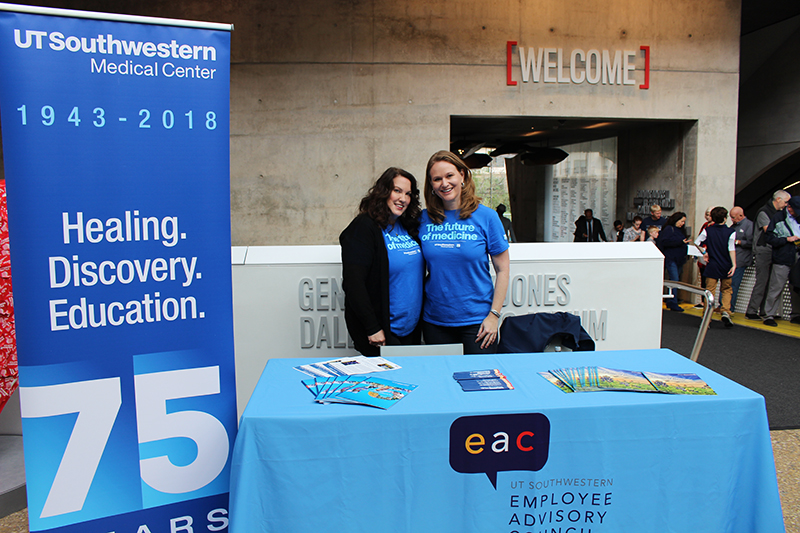Brains, birds, and blue shirts: UT Southwestern Day at the Perot Museum shares research with community

Children marveled over human and animal brains, raced dinosaurs, and donned lab coats at the recent UT Southwestern Day at the Perot Museum of Nature and Science, celebrating UT Southwestern’s 75th anniversary.
More than 450 guests including UT Southwestern employees, their families, and friends attended the special event in October. Decked out in their UTSW 75th anniversary T-shirts, they practically turned the Perot blue. In fact, UTSW was woven throughout all five levels of the building, from displays to digital signs congratulating UT Southwestern on 75 years of achievement.

UT Southwestern’s contributions are on display throughout the exhibit halls at the Perot Museum, with nine exhibits highlighting UT Southwestern Medical Center science and leaders. The Being Human Hall – the first exhibit hall to be fully reimagined since the museum opened in 2012 – includes the striking exhibit of a human brain. It is one of only three places in the United States where you can see a brain and spinal cord attached.
“I was very interested in coming to the Perot Museum, but never had an opportunity to stop everything and make it happen,” said Gabrielle Hawthorne, Program Coordinator in Radiation Oncology. “So when I saw that UT Southwestern was having a day here, I decided to bring my goddaughter so we could experience it together. We’re excited to see the brain and the spinal cord that UT Southwestern donated.”
Employee and student volunteers hosted six informational tables, interacting with UTSW and community visitors.
- A 75th anniversary-themed welcome table greeted employees and guests alike, offering a backdrop for photos and information about UT Southwestern’s exhibit contributions to the museum. Handouts included a crossword puzzle with clues about the exhibits.
- Ask a Brain Scientist was particularly popular with children and adults, who were invited to try on lab coats and take pictures with a model brain. Graduate students answered questions, handed out brain-shaped erasers, and collaborated with the Perot Museum’s Director and Research Scientist of the Center for the Exploration of the Human Journey, Dr. Brenda Peixotto, to compare animal skulls and brains.
- Dr. Todd Roberts’ lab team shared its research on bird songs and human language development; their videos demonstrating this research were a hit among visitors.
- The Concussion Network of North Texas (ConTex) team, stationed next to the Sports Hall, shared information on concussions, answered guest questions, conducted dowel response time tests (which measure response rate and are used with people who may have experienced a concussion), and provided tips for prevention and general healthy living habits.
- The Employee Advisory Council (EAC), which provided many volunteers for the event, greeted guests at their table and handed out UT Southwestern pencils.

“This was a great employee engagement day, with the spirit of our 75th anniversary all around,” said Julie Buchl, 2018-2019 EAC Chair. “The EAC was very excited to participate in this event, with the goal of giving our employees more opportunities to share their enthusiasm for their work with the broader North Texas community.”
Dr. Roberts is an Assistant Professor in Neuroscience and a Thomas O. Hicks Scholar in Medical Research.

